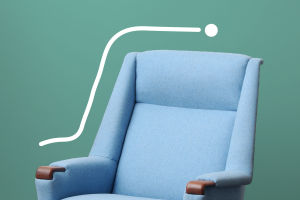Moment, Wind Turbines are common in many countries and regions around the world. But have you ever wondered how wind turbines work?
A wind turbine is essentially an electric generator in reverse. Rather than using electricity to generate wind power, a wind turbine uses wind energy to generate electricity. When the wind is strong enough, it can turn the blades of a rotating wind turbine.
The wind turbine blades are connected to the generator with the help of a low-speed shaft, a gearbox, and a high-speed shaft. External factors of a wind turbine
1. The palace
One of the most notable features of a wind turbine is its tall tower. What is generally seen is a tower wind turbine that is over 200 feet tall. This does not take into account the height of the blades. The height of the wind turbine blades easily adds another 100 feet to the total height of the wind turbine on top of the tower.
The tower has a scaffold for the construction crew to access the top of the turbine. High voltage lines are also installed and laid on the tower to carry the electricity generated by the turbine to its base.
2. Machine cell
At the top of the palace, one enters the machine cell. This is a streamlined enclosure. The internal components of the wind turbine are erected within. The nacelle resembles a square box and is located at the top of the palace.
The nacelle provides protection for the essential internal components of the wind turbine. These components include the generator, gearbox, and low and high-speed shafts.
3. Blades rotors
Arguably, the most striking element of a wind turbine is its blades. Wind turbine blades can exceed 100 feet in length, and one will constantly find marketable wind turbines fitted with three blades that form the rotor.
The blades of wind turbines are aerodynamically designed so that they can more easily harness wind energy. When the wind blows, the wind turbine blades will begin to turn, providing the kinetic energy needed to generate electricity within the generator.
4. Anemometer and wind vane
Other external factors of a wind turbine include an anemometer and a wind vane. These factors are not easily set up on marketable wind turbines from a distance because of their fairly small size compared to turbines.
The anemometer and wind vane are generally mounted at the back of the nacelle and are used to measure the current wind speed and direction. This data can also be fed to the wind turbine's internal control system, which can adjust the yaw angle of the turbine and the pitch of the blades to maximize its effectiveness. It should be noted that not all commercially available wind turbines have a yaw and pitch mechanism.
The retired factors of a wind turbine
1. Low-speed shaft
As the wind turbine blades rotate, the low-speed shaft is driven by the rotation of the wind turbine blades. The low-speed shaft transmits kinetic energy to the gearbox.
2. Transmission
The gearbox is a heavy and valuable device that connects the low-speed shaft to the high-speed shaft. The purpose of the gearbox is to increase the speed to a level sufficient for the generator to produce electricity.
3. High-speed shaft
The high-speed shaft connects the gearbox to the creator for the sole purpose of driving the creator in order to induce electricity.
4. The creator
The creator is driven by the high-speed shaft and generates electricity when the high-speed shaft delivers sufficient kinetic energy.
5. Pitch and yaw motors
Some wind turbines have pitch and yaw motors to help maximize the effectiveness of the wind turbine by positioning the blades in the most optimal direction and at the most optimal angle. The pitch motor can generally be set up near the center of the rotor, which will help tilt the blades to provide better aerodynamics. The yaw pitch motor will be located in the base below the nacelle and will keep the nacelle and rotor facing the current wind direction.
6. Braking system
The pivotal element of a wind turbine is its deceleration system. Its function is to help the wind turbine blades from turning too presto and causing damage to the factors. When braking is applied, some kinetic energy is converted into heat.
7. Control system
The wind turbine has an internal control system that serves a variety of purposes. It can start the wind turbine when the wind speed is high enough and can also shut down the wind turbine when the wind speed is too high.
The control system is also the medium for calculating the most effective pitch and yaw of the turbine predicated on the wind speed and direction.
How wind turbines induce electricity
1. This process is initiated by the turbine blades' rotor. As the wind blows, the aerodynamically designed blades start to rotate by the wind.
2. As the blades of the wind turbine rotate, the kinetic energy of this movement is transferred to the innards of the turbine using a low-speed shaft, which rotates at a speed of roughly 30 to 60 rpm.
3. The low-speed shaft is connected to a gearbox, which is a transmission unit responsible for adding the speed from roughly 30 to 60 revolutions per minute to the demanded rotation speed of the creator( generally between, 000 and, 800 revolutions per minute).
4. The high-speed shaft transfers kinetic energy from the gearbox to the creator, which also begins to rotate and produce electricity.
5. Ultimately, the electricity it produces is fed down from the turbine palace via a high voltage string and will generally be fed to the grid or used as an original power source.


